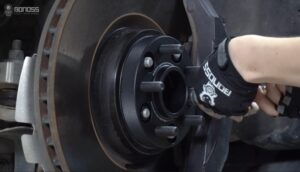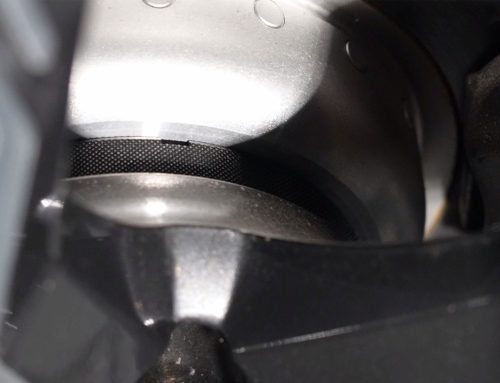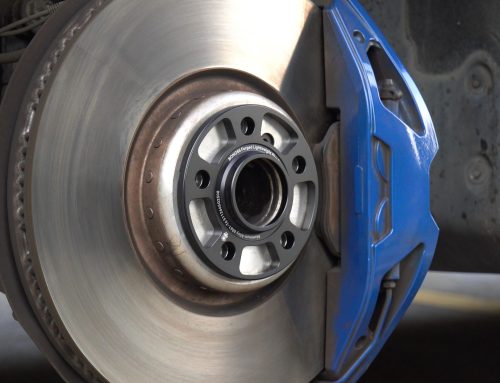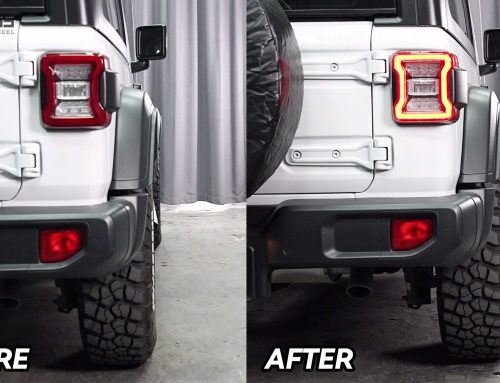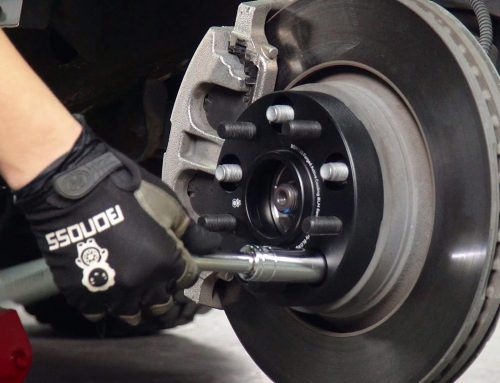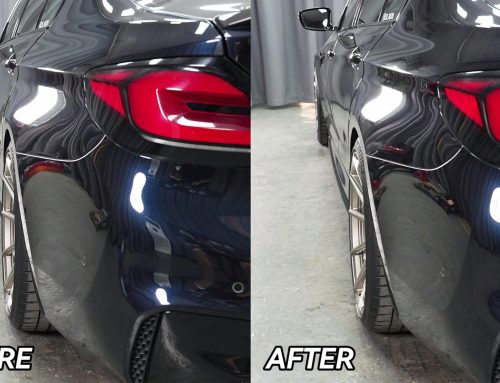If you want to give your Nissan GTR a more aggressive stance and improve its handling, you might consider installing wheel spacers on your car. Nissan GTR wheel spacers are devices that fit between the wheel hub and the wheel, creating a gap that pushes the wheel outward. This can reduce the offset of the wheel, which is the distance between the centerline of the wheel and the mounting surface of the hub. A lower offset can increase the track width of your vehicle, which is the distance between the centerlines of your left and right wheels. This can improve the stability, cornering, and appearance of your GTR.
However, installing wheel spacers on your GTR is not a simple plug-and-play process. You need to make sure that you choose the right size and type of wheel spacers for your car, and that you install them properly and securely. Otherwise, you might risk damaging your wheels, tires, suspension, brakes, or even causing an accident.
In this post, we will show you how to install wheel spacers on your Nissan GTR correctly and safely in a step-by-step guide. Before we start, make sure that you have the following tools and materials:
- A jack and jack stands
- A lug wrench or a torque wrench
- A breaker bar or an impact wrench
- A measuring tape or a ruler
- A marker or a chalk
- A wire brush or a sandpaper
- A thread locker or an anti-seize compound
- A hub-centric wheel spacer set that matches your GTR’s bolt pattern, hub bore, and desired thickness
- Extended wheel bolts or studs that are longer than your stock ones by the thickness of the wheel spacers
Installation of Nissan GTR wheel spacers
Step 1: Lift your car and remove your wheels
First, you need to lift your car and remove your wheels. To do this, follow these steps:
- Park your car on a flat and level surface. Engage the parking brake and chock the wheels that you are not working on.
- Loosen the lug nuts or bolts on the wheels that you are working on by using a lug wrench or a torque wrench. Do not remove them completely yet.
- Place a jack under the appropriate jacking point of your car and lift it until the wheels are off the ground. Refer to your owner’s manual for the correct jacking points.
- Place jack stands under the appropriate support points of your car and lower the jack until the car rests on the jack stands. Refer to your owner’s manual for the correct support points.
- Remove the lug nuts or bolts completely and take off the wheels.
Step 2: Clean and measure your hub and wheel
Next, you need to clean and measure your hub and wheel. To do this, follow these steps:
- Use a wire brush or a sandpaper to clean any dirt, rust, or corrosion from the hub surface and the wheel mounting surface. Make sure that they are smooth and flat.
- Use a measuring tape or a ruler to measure the diameter of the hub bore, which is the hole in the center of the hub. Write down this measurement.
- Use a measuring tape or a ruler to measure the diameter of the wheel center bore, which is the hole in the center of the wheel. Write down this measurement.
- Use a measuring tape or a ruler to measure the clearance between your tire and your vehicle body or suspension components. Write down this measurement.
Step 3: Choose and test fit your wheel spacers
Now, you need to choose and test fit your wheel spacers. To do this, follow these steps:
- Compare your hub bore measurement with your wheel center bore measurement. If they are equal or very close, you can use hub-centric wheel spacers, which are designed to fit snugly on your hub and center your wheel properly. If they are different or too far apart, you can use lug-centric wheel spacers, which rely on your lug nuts or bolts to center your wheel.
- Compare your clearance measurement with your desired thickness of wheel spacers. You should choose a wheel spacer that is slightly thinner than your clearance measurement to avoid rubbing issues. For example, if you have 20 mm of clearance between your tire and your vehicle body or suspension components, you can use a 15 mm wheel spacer.
- Compare your bolt pattern with your wheel spacer bolt pattern. You should choose a wheel spacer that matches your bolt pattern exactly. For example, if you have a 5×114.3 bolt pattern, you should use a 5×114.3 wheel spacer.
- Test fit one of your wheel spacers on one of your hubs by placing it over the hub bore and aligning it with the bolt holes. Make sure that it fits snugly and evenly without any gaps or wobbles.
- Test fit one of your wheels on top of the wheel spacer by placing it over the wheel spacer and aligning it with the bolt holes. Make sure that it fits snugly and evenly without any gaps or wobbles.
- Check the clearance between your tire and your vehicle body or suspension components. Make sure that there is enough space for your tire to move freely without rubbing.
- Check the alignment of your wheel with your fender. Make sure that your wheel is flush or slightly inside your fender, not sticking out too much.
- If everything looks good, repeat the test fit process for the other wheels that you are working on. If not, adjust the size or type of your wheel spacers accordingly.
Step 4: Install your wheel spacers and wheels
Finally, you need to install your wheel spacers and wheels. To do this, follow these steps:
- Apply a thin layer of thread locker or anti-seize compound to the threads of your stock wheel bolts or studs. This will prevent them from loosening or seizing due to vibration or heat.
- Install your extended wheel bolts or studs on your hub by using a lug wrench or a torque wrench. Make sure that they are tightened to the specified torque value according to your owner’s manual.
- Apply a thin layer of thread locker or anti-seize compound to the threads of your extended wheel bolts or studs. This will prevent them from loosening or seizing due to vibration or heat.
- Install your wheel spacers on your hub by placing them over the hub bore and aligning them with the bolt holes. Make sure that they are flush and even with the hub surface.
- Install your wheels on top of the wheel spacers by placing them over the wheel spacers and aligning them with the bolt holes. Make sure that they are flush and even with the wheel spacers.
- Install your lug nuts or bolts on your extended wheel bolts or studs by using a lug wrench or a torque wrench. Make sure that they are tightened to the specified torque value according to your owner’s manual.
- Lower your car and remove the jack and jack stands. Check and adjust the air pressure of your tires according to your owner’s manual.
- Drive your car for a few miles and check for any noises, vibrations, or rubbing issues. If you notice any problems, stop and inspect your wheels and tires. If everything is fine, enjoy your new look and feel of your GTR.
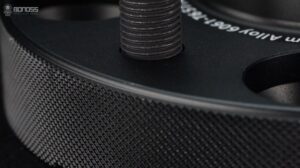
Where to buy quality Nissan GTR wheel spacers?
BONOSS Nissan GTR wheel spacers are quality spacers you can order online. They are forged AL7075-T6 and AL6061-T6, which are light and strong spacers to withstand the stress and add less weight to the car. If you compare cheap cast spacers with the forged ones, you can see the cast ones break. When driving on roads at a high speed, cheap spacers put you at risk of traffic accidents. For your safety, always choose quality wheel spacers.
Incompatible spacers can cause vibration and wobble of the car. BONOSS Nissan GTR wheel spacers are the spacers of perfect fitment. They are hub-centric with a lip to secure the spacers in the hub bore and keep the balance of the spacers when the hub spins. But common hub-centric spacers are not really ‘hub-centric’, because they are not tightly fit the hub and wheel. Look carefully, you can see the chamfers and stages in the hub bore and wheel bore. In order to avoid vibration and wobble, BONOSS Nissan GTR wheel spacers are processed with the corresponding stages and chamfers. There are few spacers that are so meticulously crafted like BONOSS spacers.
When switching to extended wheel studs, the quality of the studs is important. A longer wooden stick is easy to bend. Wheel studs are similar. BONOSS Nissan GTR wheel spacers are equipped with ISO grade 12.9 studs and ISO grade 10 nuts, which prevents studs from breaking and bending.

